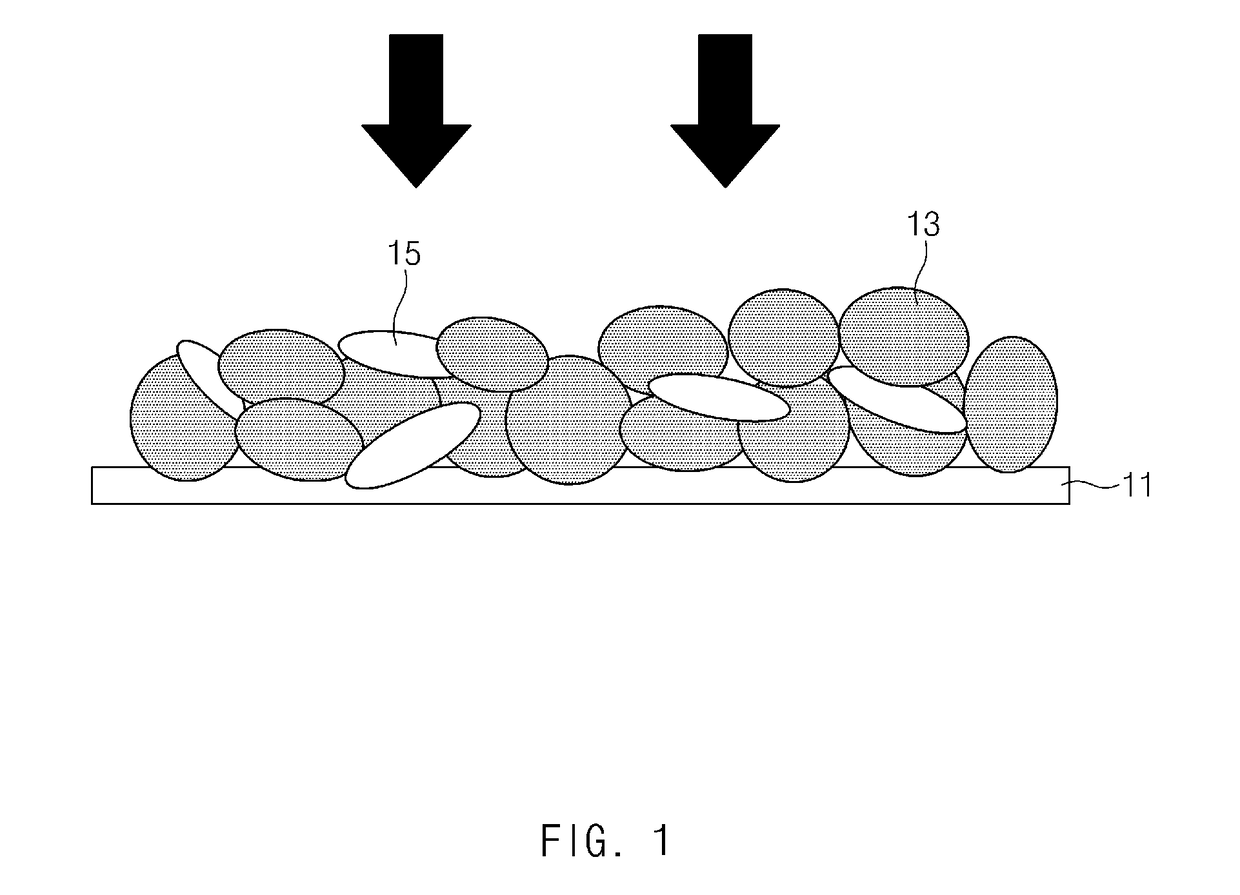Negative electrode active material and negative electrode for secondary battery comprising the same
a secondary battery and active material technology, applied in the direction of active material electrodes, cell components, electrical apparatus, etc., can solve the problem of difficult preparation of high-density electrodes with targeted porosity, and achieve the effect of improving charge and discharge characteristics and improving rolling properties
- Summary
- Abstract
- Description
- Claims
- Application Information
AI Technical Summary
Benefits of technology
Problems solved by technology
Method used
Image
Examples
example 1
[0085](Negative Electrode Active Material Preparation)
[0086]Powder having an average particle diameter (D50) of 15 μm was obtained from petroleum coke by using a jet mill. Mechanical grinding was performed to trim corners of the powder, and spherical artificial graphite particles having an average particle diameter (D50) of 13 μm were then prepared by heat treating (graphitizing) the powder at 3,000° C. for 20 hours in an inert (N2) gas atmosphere.
[0087]Impurities were removed by heat treating natural flake graphite having a maximum diameter of 10 μm at 2,800° C. for 20 hours.
[0088]The spherical artificial graphite 13 and the natural flake graphite 15 were mixed in a weight ratio of 95:5 to prepare a negative electrode active material (average particle diameter (D50) of 12.9 μm).
[0089](Negative Electrode Preparation)
[0090]The prepared negative electrode active material, a conductive agent (super-P), carboxy cellulose as a thickener, and a styrene-butadiene rubber as a binder were mi...
example 2
[0094]A negative electrode active material (average particle diameter (D50) of 12.4 μm) and a negative electrode plate including the same were prepared in the same manner as in Example 1 except that the spherical artificial graphite and the natural flake graphite were mixed in a weight ratio of 80:20 in the preparation of the negative electrode active material in Example 1.
[0095]Changes in density and porosity of a negative electrode material mixture layer were measured in the same manner as in Example 1, and the results thereof are presented in Table 1 below.
example 3
[0096]A negative electrode active material (average particle diameter (D50) of 12.6 μm) and a negative electrode plate including the same were prepared in the same manner as in Example 1 except that spherical artificial graphite, in which mesocarbon microbeads having a particle diameter ratio of 1:0.85 were graphitized, and the natural flake graphite were mixed in a weight ratio of 80:20 in the preparation of the negative electrode active material in Example 1.
[0097]Changes in density and porosity of a negative electrode material mixture layer were measured in the same manner as in Example 1, and the results thereof are presented in Table 1 below.
PUM
| Property | Measurement | Unit |
|---|---|---|
| particle diameter | aaaaa | aaaaa |
| particle diameter | aaaaa | aaaaa |
| particle diameter | aaaaa | aaaaa |
Abstract
Description
Claims
Application Information
 Login to View More
Login to View More - R&D
- Intellectual Property
- Life Sciences
- Materials
- Tech Scout
- Unparalleled Data Quality
- Higher Quality Content
- 60% Fewer Hallucinations
Browse by: Latest US Patents, China's latest patents, Technical Efficacy Thesaurus, Application Domain, Technology Topic, Popular Technical Reports.
© 2025 PatSnap. All rights reserved.Legal|Privacy policy|Modern Slavery Act Transparency Statement|Sitemap|About US| Contact US: help@patsnap.com



